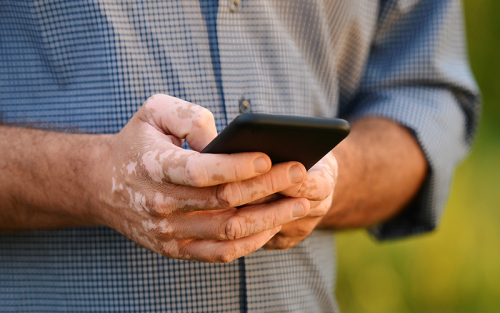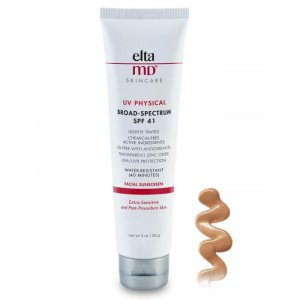Skin discoloration — or changes in skin color — is a very common skin problem that can be caused by many different conditions. These “spots” can be small or large patches and can show up anywhere on the body.
Like any skin condition, the results can be very distressing, causing sufferers to become self-conscious about the way their skin looks.
What causes white spots on the skin, and what can you do about them? Kathryn Celeste Durham, MD, weighs in on some of the most common causes of skin white spots and how to most effectively treat them.
What Causes White Spots?
There are many factors that can cause white or light spots to form on the skin. The most common condition is called pityriasis alba and can be associated with eczema, inflammation or dry skin.
When the skin becomes irritated, it can stop making pigment normally and leave behind an area that looks lighter than your normal skin color. In some, this may be very subtle, while in others it is very noticeable. The extent of the discoloration depends on the degree of inflammation and the amount of natural pigment in your skin.
Other conditions that can cause white or light spots are vitiligo and tinea versicolor.
Vitiligo is an autoimmune disease that causes white patches of skin to appear on different areas of the body as the cells that make pigment in the skin — melanocytes — are destroyed. White patches can spread slowly over time, or rapidly in some cases.
The most common locations affected by vitiligo are those areas of the skin most exposed to the sun, including the hands, feet, arms, face, and lips. Vitiligo can also affect mucous membranes in the mouth, nose, and eyes.
The exact cause of vitiligo is unknown, though some people with certain autoimmune diseases tend to suffer from vitiligo at a higher rate than others. Sometimes, the condition can also run in families.
Tinea versicolor, also called ptyriasis versicolor, is another common skin condition that can affect the color of your skin. This condition is caused by yeast that normally exists on the skin in small numbers. When this yeast overgrows, white and reddish-brown spots can develop.
Overgrowth of yeast most commonly occurs on skin that is moist or oily. Living in humid and warm climates, excessive sweating, oily skin or even some medications can encourage the growth of yeast on the skin.
Treatments for Pityriasis Alba
Pityriasis alba is an easy condition to treat with emollients and creams.
When treating white or light spots on the face, look for products that will repair the skin barrier. The skin normally acts as a barrier and provides protection from the outside world. When looking for products that will help restore skin to its natural function, start with products containing ceramide.
Some of our favorite products include Cetaphil Restoraderm moisturizer and Epionce Extreme Barrier Cream for the body. For the face, La Roche Posay Toleriane Double Repair Moisturizer, and EltaMD Barrier Renewal Complex are good choices.
Sun protection is also important in helping the skin tone to even out. The light areas are more susceptible to burning, and the normal but darker-appearing areas will continue to tan naturally in the sun. To help even out your complexion faster — to prevent premature aging and skin cancer — select a sunscreen with SPF 30 or higher and apply in the morning every day and when you plan on being outside.
Certain sunscreens also help repair the barrier function of the skin, including EltaMD UV Physical and EltaMD UV Elements and La Roche Posay Double repair Moisturizer UV.
Treating Vitiligo and Tinea Versicolor
More serious causes of skin discoloration, such as vitiligo and tinea versicolor, need to be evaluated and treated by a board certified dermatologist
Vitiligo can be treated with topical steroid creams, photochemotherapy, and oral medications. Skin grafting or micro pigmentation — the tattooing small areas of skin to add color — are two surgical options for treating vitiligo. Minimizing sun exposure and using sunscreen can also help decrease the contrast between healthy and affected skin, and some cosmetic products can also help to camouflage depigmentation and even out skin tone.
Tinea versicolor can typically be treated with over-the-counter antifungal medications to combat the underlying infection. If symptoms persist with the use of over-the-counter treatments for more than two weeks, consult a dermatologist.
To help protect your skin from developing light or white spots, make sure to moisturize daily, keep skin hydrated and use products that are not irritating to your skin.
If you have a persistent light or white spot and nothing seems to help, please seek the advice of a board certified dermatologist, as it could be a more serious problem that requires prescription medications.
Looking to Learn More About White Spots on Your Skin?
To learn more about the causes of white spots on the skin and available treatment options, contact the doctors at U.S. Dermatology Partners today. We have multiple locations throughout the country, so fill out our simple online form to get in touch with us. One of our local team members will reach out to you shortly to answer your questions or schedule an appointment for you to visit us soon.
Find a location near me
or




